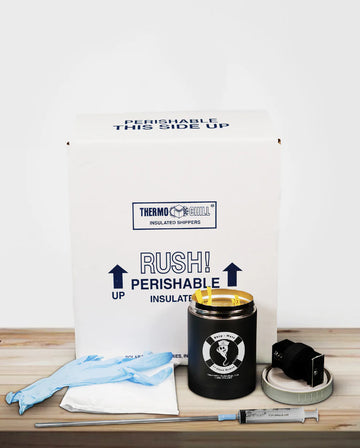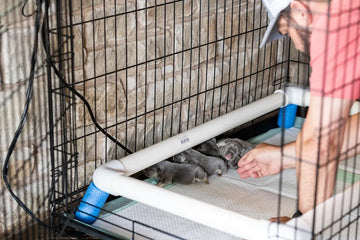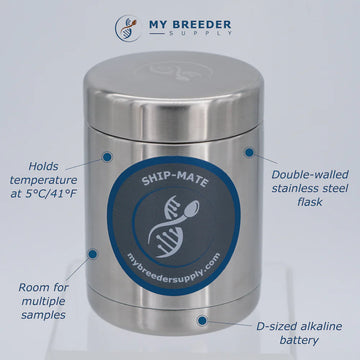
Canine parvovirus, commonly known as parvo, is a highly contagious and potentially fatal disease that affects dogs, particularly puppies and unvaccinated adult dogs.
Detecting parvo in its early stages is crucial for effective treatment and preventing its spread to other dogs.
In this comprehensive guide, we will walk you through the essential steps on how to test for parvo and why early detection is vital for your furry companion.
What is Parvo?
Understanding the Virus
Canine parvovirus is a highly contagious virus that primarily targets the gastrointestinal tract of dogs. It can be transmitted through direct contact with an infected dog, contaminated surfaces, or even through the feces of an infected animal.
Parvo attacks rapidly dividing cells in a dog's body, including those in the intestines and bone marrow.
Common Symptoms
Early identification of parvo symptoms is crucial. Keep an eye out for these common signs:
- Severe Diarrhea: Parvo often causes bloody and foul-smelling diarrhea.
- Vomiting: Dogs with parvo may vomit frequently, leading to dehydration.
- Lethargy: Infected dogs become weak and lethargic.
- Loss of Appetite: A sudden lack of interest in food is a red flag.
- Distinctive Odor: The diarrhea has a unique and unpleasant odor.
If you notice any of these signs in your dog, it's imperative to act swiftly.
Why Early Detection Matters
Preventing the Spread
Early detection plays a pivotal role in preventing the spread of parvo to other dogs. Infected dogs can shed the virus in their feces for up to two weeks, even before showing symptoms. Timely testing can help isolate infected dogs and implement necessary precautions to protect others in your community.
Types of Parvo Tests

In-House Tests
In-house parvo tests are rapid diagnostic tests that provide results within minutes. These tests are commonly used by veterinarians to quickly confirm or rule out parvo in suspected cases. They are efficient and provide swift answers, enabling prompt action.
Veterinary Lab Tests
Veterinary lab tests, while more comprehensive and accurate, may take longer to produce results. They are typically used when in-house tests yield inconclusive results or when a more detailed analysis is required. Your veterinarian will guide you on the most appropriate testing method.
At-Home Testing Kits
At-home parvo testing kits have gained popularity due to their convenience. These kits typically include everything you need to collect a sample and perform the test at home. They offer accuracy comparable to veterinary lab tests, making them a reliable option for concerned pet owners.
Collecting a Sample
Fecal Testing
Fecal testing is the most common method for diagnosing parvo. A small sample of your dog's feces is collected and tested for the presence of the virus. It's essential to follow the instructions carefully to ensure accurate results.
Swab Testing
Swab testing involves taking a sample from your dog's rectal area. This sample is then tested for the presence of parvovirus. Consult your veterinarian if you are unsure how to perform this test correctly.
Understanding Test Results
Positive vs. Negative
A positive test result indicates the presence of parvovirus in your dog's system, confirming the diagnosis. A negative result suggests that the virus is not currently present. However, it's important to remember that false negatives can occur, especially in the early stages of infection. Always consult your veterinarian for guidance.
What to Do if Your Dog Tests Positive
Treatment Options
If your dog tests positive for parvo, immediate treatment is crucial. Treatment typically involves hospitalization, intravenous fluids to combat dehydration, antibiotics to prevent secondary infections, and other supportive care measures. The sooner treatment begins, the better the chances of a full recovery.
Preventing Parvo
Prevention is the key to protecting your dog from parvo. Puppies should receive a series of vaccinations starting at around six weeks of age, with booster shots as recommended by your veterinarian. Adult dogs should also receive regular vaccinations to maintain their immunity.
Hygiene Practices
Maintaining good hygiene practices is essential in preventing the spread of parvo. Clean and disinfect your dog's living area regularly, and avoid contact with dogs of unknown vaccination status.
Testing for parvo is a crucial step in safeguarding your dog's health and preventing the spread of this highly contagious virus. Early detection allows for prompt treatment, which significantly improves the chances of a full recovery. Remember to consult your veterinarian if you suspect your dog may have parvo, as they can provide the best guidance and care to ensure your furry friend's well-being.
FAQ
Can other animals, besides dogs, contract parvo?
While canine parvovirus primarily affects dogs, certain wild canids like foxes and raccoon dogs can also be susceptible to the virus.
Is there a risk of parvo transmission through dog grooming or boarding facilities?
Yes, there is a risk of parvo transmission in places where dogs gather. Ensuring proper vaccination and hygiene in such facilities is crucial.
Can older dogs get parvo, or is it mainly a concern for puppies?
While puppies are more vulnerable, unvaccinated older dogs can still contract parvo. Vaccination is essential throughout a dog's life.
Are there any natural remedies or home treatments for parvo?
Parvo is a serious disease, and home remedies are not a substitute for professional veterinary care. Always consult a veterinarian for proper treatment.




